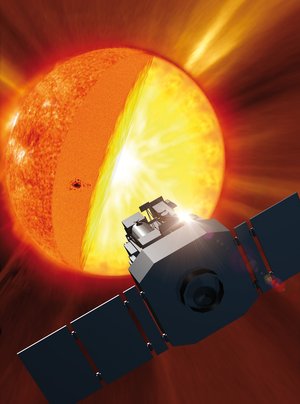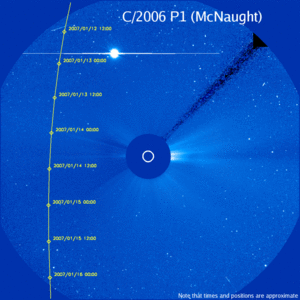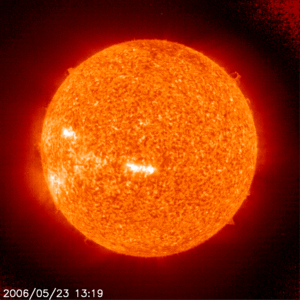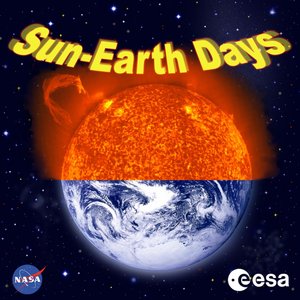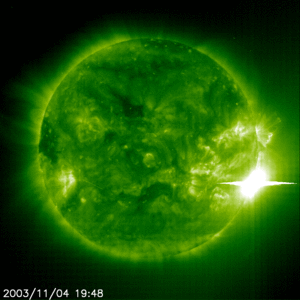SOHO: the new solar cycle starts with a ‘bang’
The appearance of a very special solar spot on the sun surface a few days ago, signalled to scientists around the world that a new solar cycle had begun. This solar spot also produced two solar blasts.
Each solar cycle lasts an average of 11.1 years. The new solar cycle, called ‘Cycle 24’, started on 4 January this year, when SOHO observed an event scientists have been anticipating for about a year.

A fairly small and, at first sight, inconspicuous sunspot on the Sun’s northern hemisphere showed a reversed magnetic polarity compared to sunspots of previous years. A sunspot is an area of highly organised magnetic activity on the surface of the Sun. This sunspot convinced scientists that a new solar cycle had begun. Later that day, this finding was made official when the sunspot was catalogued by the US National Oceanic and Atmospheric Administration (NOAA).

SOHO was not only first in spotting this harbinger of the new solar cycle, it also observed two associated ‘EIT waves’, blast waves that spread out from active regions on the Sun like ripples from a pebble dropped into water. The new cycle started with a ‘bang’!
This is just the beginning, and scientists are now eagerly awaiting the activity to follow. Solar Cycle 24 is expected to build gradually, with the number of sunspots and solar storms reaching a maximum by 2011 or 2012, although intense solar activity can occur at any time.
Note for editors

The Solar and Heliospheric Observatory (SOHO) celebrated the twelfth anniversary of its launch on 2 December 2007. The satellite has witnessed the Sun change through almost a complete solar cycle, from quiet to stormy, and back.
SOHO is a project of international collaboration between ESA and NASA.
For more information:
Bernhard Fleck, ESA SOHO Project Scientist
Email: bfleck @ esa.nascom.nasa.gov















 Germany
Germany
 Austria
Austria
 Belgium
Belgium
 Denmark
Denmark
 Spain
Spain
 Estonia
Estonia
 Finland
Finland
 France
France
 Greece
Greece
 Hungary
Hungary
 Ireland
Ireland
 Italy
Italy
 Luxembourg
Luxembourg
 Norway
Norway
 The Netherlands
The Netherlands
 Poland
Poland
 Portugal
Portugal
 Czechia
Czechia
 Romania
Romania
 United Kingdom
United Kingdom
 Slovenia
Slovenia
 Sweden
Sweden
 Switzerland
Switzerland






























